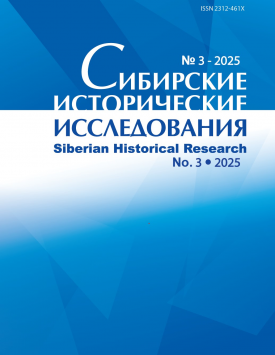The Arctic City Between Design and Daily Life: An Epistemology of Comfort
This article examines the Arctic city as a space of epistemological divergence between design-based and everyday forms of knowledge. The empirical basis of the study includes semi-structured interviews with architects and residents, mobile (drive-along) and informal interviews, a focus group, and field observations conducted in the cities of Novy Urengoy and Tarko-Sale. The article explores how notions of comfort, urban normality, and inhabitability are constructed under conditions of extreme climate, demographic instability, and infrastructural limitations. It demonstrates that architectural knowledge in the Arctic context is governed by normative visuality and institutional accountability, whereas everyday narratives focus on bodily vulnerability, care, and situational adaptation. Rather than interpreting these contradictions as failures of implementation, the study proposes to view them as productive fields of attunement that analytically reveal the city as a plural and contested socio-technical assemblage. Methodologically, the research combines narrative analysis with elements of situated ethnography and contributes to urban anthropology, critical infrastructure studies, and the social history of everyday life in the Arctic. The authors declare no conflict of interests.
Keywords
Arctic,
urban comfort,
architectural knowledge,
everyday life,
embodiment,
infrastructure,
urban experience,
ethnography of the North,
urban design,
situated knowledgeAuthors
| Ustyuzhantseva Olga V. | National Research Tomsk State University | olgavust@gmail.com |
| Prokopova Sofia M. | Ural Federal University named after the First President of Russia B.N. Yeltsin | Sofiaprokopova@gmail.com |
| Kravchuk Svetlana G. | Ural Federal University named after the First President of Russia B.N. Yeltsin | svetlana_usenyuk@mail.ru |
Всего: 3
References
Волков А.Д., Симакова А.В. Арктический моногород: восприятие населением своего будущего в перспективах его развития // Регионология. 2022. Т. 30, № 4 (121). С. 851881. doi: 10.15507/2413-1407.121.030.202204.851-881.
Малышев Г.Н. Концепт идентичности в современной российской архитектурноградостроительной практике как инструмент профессиональной легитимации: этнография одного бюро // Городские исследования и практики. 2024. № 9 (4). С. 4053. doi: 10.17323/usp94202440-53.
Мастер-план Мурманска 2023 - Проект мастер-плана развития города Мурманска // Правительство Мурманской области. 2023. URL: https://nashsever51.ru/storage/temporary/24/03/06/156462/47cdd109-1303-48df-a944-0d4ae3334461.pdf.
Мороз О.В. Красота по заказу: визуальная культура и новая этика благоустройства в современной России // Неприкосновенный запас. 2019. № 6 (132). С. 216-233. doi: 10.17323/2071-160X-2019-6-216-233.
Паспорт приоритетного проекта «Формирование комфортной городской среды» (утв. Президиумом, протокол № 10 от 21 ноября 2016 г.). М., 2016.
ПМА - Полевые материала: автора. Экспедиция в Новый Уренгой и Тарко-Сале, май 2024 (см. таблицу интервью).
Стратегия развития Арктической зоны Российской Федерации и обеспечения национальной безопасности до 2035 года (утверждена Указом Президента № 645 от 26 октября 2020 г.).
Третьякова А.А. Антропология крафтового архитектурного бюро: как идеи превращаются в проекты // Городские исследования и практики. 2024. № 9 (4). С. 2239. doi: 10.17323/usp94202422-39.
Фуко М. Воля к истине: по ту сторону знания, власти и сексуальности. Работы разных лет: пер. с фр. М.: Касталь, 1996. 448 с.
Bolotova A. Conquering Nature and Engaging with the Environment in the Russian Industrialised North: PhD diss. University of Lapland, 2014.
Collier S., Ong A. Global Assemblages: Technology, Politics, and Ethics as Anthropological Problems. Oxford: Blackwell Publishing, 2005.
Cuff D. Architecture: The Story of Practice. Cambridge, MA: MIT Press, 1992.
de Certeau M. The Practice of Everyday Life. Berkeley: University of California Press, 1984.
Dovey K. Becoming Places: Urbanism / Architecture / Identity / Power. London: Routledge, 2010.
Farias I., Bender T. (eds.). Urban Assemblages: How Actor-Network Theory Changes Urban Studies. London: Routledge, 2010.
Frohlich C. Urban Citizenship under Post-Soviet Conditions: Grassroots Struggles of Residents in Contemporary Moscow // Journal of urban affairs. 2020.Vol. 42 (2). P. 188-202.
Geertz C. The Interpretation of Cultures: Selected Essays. New York: Basic Books, 1973.
Gunko M., Zupan D., Riabova L., Zaika Y., Medvedev A. From policy mobility to top-down policy transfer: 'Comfortization' of Russian cities beyond neoliberal rationality // EPC: Politics and Space. 2022. Vol. 40 (6). P. 1382-1400.
Haraway D. Situated Knowledges: The Science Question in Feminism and the Privilege of Partial Perspective // Feminist Studies. 1988. Vol. 14 (3). P. 575-599.
Jasanoff S. Designs on Nature: Science and Democracy in Europe and the United States. Princeton: Princeton University Press, 2005.
Kruse J. et al. Survey of Living Conditions in the Arctic (SLiCA) // Barometers of Quality of Life Around the Globe. Social Indicators Research Series, vol 33 / eds. by V. Moller, D. Huschka, A.C. Michalos. Springer, Dordrecht, 2008. doi: 10.1007/978-1-4020-8686-1_5.
Lefebvre H. Rhythmanalysis: Space, Time and Everyday Life. London: Bloomsbury Academic, 2004.
Schon D.A. The Reflective Practitioner: How Professionals Think in Action. New York: Basic Books, 1983.
Scott J.C. Seeing Like a State: How Certain Schemes to Improve the Human Condition Have Failed. New Haven: Yale University Press, 1998.
Simone A. People as Infrastructure: Intersecting Fragments in Johannesburg // Public Culture. 2004. Vol. 16 (3). P. 407-429.
Yaneva A. Making the Social Hold: Towards an Actor-Network Theory of Design // Design and Culture. 2009. Vol. 1 (3). P. 273-288.

